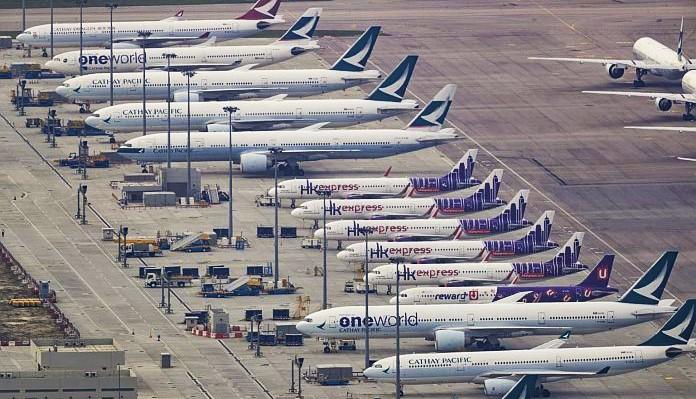Collision or collusion in open skies?
In 2017, American Airlines Chief Executive Doug Parker declared, “I don’t think we are ever going to lose money again.” And yet, three years later, both American and global airline industry prospects are grimmer than ever. Since the beginning of the COVID-19 pandemic, governments have poured more money into airlines than any other industry – an issue that brought controversy even before this crisis.
Competition among airlines was and remains of keen interest to national and international regulators, not least the European Commission which has been vying to maintain competitive skies by fining governments over subsidies and other state aid. It was also the subject of a war between Gulf and American carriers and, briefly, even between Canada and the United Arab Emirates over the Emirates’ landing rights.

In the coming years – depending on when international travel will rebound – the sector will emerge as a litmus test of the health of the global economy, its competition dynamics and the relationship between state and non-state actors. It will also serve as an expression of globalization during its deceleration, taking the pulse of disposable spending on tourism and of business sentiment for commercial travel.
It is also the sector that, by all indicators, will be the slowest to recover long after this crisis subsides. It took six years for global air traffic to recover after the September 11th attacks. Before the patient heals this time around, passengers and pundits will be asking poignant questions not least about security, which was relegated to the back seat, with most airlines scrapping social distancing measures.
Questions will be also asked about how wisely state funding is being allocated to airlines considering broader policy objectives. Already, Austria and France have made rescue packages conditional on the adoption of climate targets. This is important because the industry would rank as the sixth largest global emitter if it were to be considered as a country. Whether governments will go as far as demanding that aid-recipient airlines preserve employment – as some have argued is critical for recovery – remains to be seen.
Pressure on governments will also come from the sector directly, as private airlines will demand to understand the criteria used to decide which airlines would be bailed out and which would be allowed to wither away. Already, privately owned airlines such as Richard Branson’s Virgin Atlantic appear to be less of a priority than those with government shareholding.
Divergence between private and government objectives was also on display recently as Lufthansa’s rescue was almost foiled by a disagreement between the German government and its largest investor, who saw his share diluted to 15%. Further politicking will be inherent as airlines are customers of the aircraft manufacturers, typically embedded in national industrial-military complexes.
At the same time, given their immense capital needs, the survival of airlines will be dependent on their ability to tap into sovereign as well as private capital. As such, it will hinge on the ability of states to reconcile national policy objectives with the commercial targets of private shareholders. These will likely not be aligned until they try to divest, which does not appear to be anytime soon.
One exception to this may be, on the one hand, protectionist measures which may benefit national governments and shareholders in equal measure. As in the past, governments will be tempted to introduce various anti-competitive measures relating to the landing rights of competitors, for example, in an effort to protect “national champions”.
On the other hand, in the post-COVID-19 New Deal 2.0, states will be under pressure to retain a greater voice in terms of governance, social and environmental prerogatives, which may not be linked to the interests of private and institutional investors. However, as cash-strapped governments will be limited in their ability to inject resources into cash-hungry airlines, national pride and sovereignty may have to give way to profitability concerns.
With lacking capital and economies of scale, the fate of airlines is poised to follow the destiny of stock exchanges. Once a symbol of sovereignty, following the restructuring of the Swedish stock exchange in the early 1980s, others have followed suit, becoming privately owned and self-listed. Subsequently, almost all become part of large stock exchange groups, which own not only the exchanges but also post-trading venues and data services.
The result of this sectoral transformation is that the world of exchanges is now dominated by a few large players who have been absorbed by national exchanges and other service providers. Even in the midst of the COVID-19 crisis, consolidation in the stock exchange space continued unabated with the acquisition of the Spanish Bolsas y Mercados Españoles by SIX, a Swiss based market infrastructure provider.
The same logic will be on display as airlines and their alliances are put under strain. Competition among airlines may become structured according to lines defined by international alliances, superseding national interests. These alliances may become less of a common club and more of a group of companies linked by a single owner.
Already, Qatar’s sovereign wealth fund, a large investor in the International Alliances Group that controls British Airways and Iberia, has promised to inject funds in exchange for board seats. If this trend is mirrored by other groups, competition dynamics in the sector may shift immensely. If so, the competitive landscape in the airlines sector will not depend on national governments, but on consolidation above nation states.
As a result, the airline sector, and perhaps other industrial sectors rescued by governments during the current crisis, may emerge dominant in a similar way as technology behemoths are today. If so, international skies may stay collision, but not collusion free. The concentration of the world economy will continue unabated, with all the unintended consequences to customers, small and medium enterprises, and even nation states.
